Films with theme "Documentary films about historical events", sorted by revenue
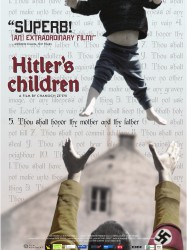
Hitler's Children (2011)
, 59minutesOrigin Israel
Genres War, Documentary, Historical
Themes Documentary films about war, Documentary films about historical events, Political films, Documentary films about World War II
Actors Samuel West
Hitler’s Children is a film about the descendants of some of the most powerful figures in the Nazi regime, such as Heinrich Himmler, Hans Frank, Hermann Göring, and Rudolf Höss, who have inherited a legacy that permanently associates them with one of the greatest crimes in history. For more than 60 years they lived in the shadows trying to rebuild their lives without the constant reminders of what their fathers and grandfathers once did.

Level Five (1997)
, 1h46Directed by Chris Marker
Origin France
Genres Science fiction, War, Documentary, Romance
Themes Films about computing, Jeu, Documentary films about war, Documentary films about historical events, Films about video games, Cyberpunk films, Anticipation
Actors Catherine Belkhodja, Chris Marker, Nagisa Ōshima
Kenji Tokitsu, expert en sports de combat et auteur de la Voix du do, et Nagisa Oshima, cinéaste, sont interviewés. (partie documentaire du film).
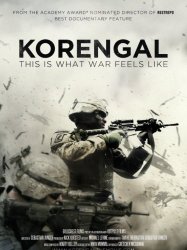
Korengal (2014)
, 1h24Directed by Sebastian Junger
Origin USA
Genres War, Documentary
Themes Films about terrorism, Documentary films about war, Documentary films about historical events, Political films
The documentary takes place between 2007 and 2008 in Korengal Valley in Afghanistan.

The Atomic Cafe (1982)
, 1h26Directed by Kevin Rafferty
Origin USA
Genres Documentary, Historical
Themes Environmental films, Documentary films about environmental issues, Documentary films about war, Documentary films about historical events, Documentary films about nuclear technology, Documentary films about technology, Political films
The film covers the beginnings of the era of nuclear warfare, created from a broad range of archival film from the 1940s, 1950s and early 1960s - including newsreel clips, television news footage, U.S. government-produced films (including military training films), advertisements, television and radio programs. News footage reflected the prevailing understandings of the media and public.

The Revisionaries (2012)
, 1h32Origin USA
Genres Documentary
Themes Films about education, Documentary films about historical events, Documentary films about politics, Political films
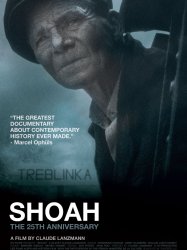
Shoah (1985)
, 9h26Directed by Claude Lanzmann
Origin France
Genres Documentary, Historical
Themes Films about racism, Films about religion, Documentary films about racism, Documentary films about law, Documentary films about war, Documentary films about historical events, Documentaire sur une personnalité, Documentary films about religion, Political films, Films about Jews and Judaism, Documentary films about World War II
Actors Claude Lanzmann
The film is concerned chiefly with four topics: Chełmno, where mobile gas vans were first used by Germans to exterminate Jews; the death camps of Treblinka and Auschwitz-Birkenau; and the Warsaw Ghetto, with testimonies from survivors, witnesses, and perpetrators.

The 3 Rooms of Melancholia (2004)
, 1h46Directed by Pirjo Honkasalo
Genres Documentary
Themes Films about children, Documentary films about law, Documentary films about war, Documentary films about historical events, Documentaire sur une personnalité, Documentary films about child abuse, Political films
Actors Pirkko Saisio
 , 2h5
, 2h5Origin USA
Genres Documentary, Historical
Themes Documentary films about business, Documentary films about historical events, Documentaire sur une personnalité, Documentary films about politics, Political films
Actors Warren Beatty, Donovan, Gore Vidal, Gloria Steinem

The Ground Truth (2006)
, 1h12Origin USA
Genres War, Documentary
Themes Documentary films about war, Documentary films about historical events, Documentaire sur une personnalité, Documentary films about health care, Political films
Actors Sean Huze
The film addresses the issues many soldiers face upon their return from the War in Iraq, including problems with Post Traumatic Stress Disorder and an inability to meld back into "normal" society. The film includes footage of soldiers in Iraq and personal interviews with about two dozen people directly affected by the war (either veterans or family members/friends of veterans). The veterans, both men and women, speak of their experiences before, during, and after the war. The veterans speak about recruitment and training, combat, their returns home, facing their families, and their difficulties in making the necessary changes needed to fit back into society. The Ground Truth was released in theatres on September 15 of 2006 and released on DVD on September 26 of the same year. People can sign up to host screenings of the film online at The Ground Truth or view a low-resolution copy online, see bottom.
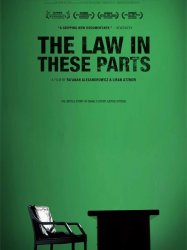
The Law in These Parts (2011)
, 1h40Origin Israel
Genres Documentary, Historical
Themes Films set in Africa, Films about religion, Documentary films about law, Documentary films about war, Documentary films about historical events, Documentaire sur une personnalité, Documentary films about politics, Documentary films about religion, Political films, Films about Jews and Judaism
Le film traite du système judiciaire opéré par les forces armées israéliennes en Cisjordanie.

...So Goes the Nation (2006)
, 1h30Directed by James D. Stern
Genres Documentary
Themes Documentary films about historical events, Documentary films about politics, Political films
Actors Steve Buscemi, Matt Dillon, Brendan Fraser, Willie Garson, Paris Hilton, Larry King
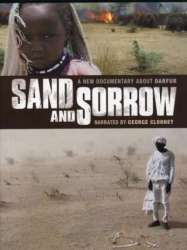
Sand and Sorrow (2007)
, 1h34Origin USA
Genres Drama, Documentary
Themes Films set in Africa, Documentary films about war, Documentary films about historical events, Documentary films about politics, Political films
Actors George Clooney, John Prendergast
Avec Darfour : du sable et des larmes, le cinéaste Paul Freedman, lauréat du Peabody Award, nous plonge dans la réalité de la situation au Darfour. Il s'est joint à un contingent des forces pour la paix de l'Union Africaine au Darfour, où l'une des pages les plus tragiques et perturbantes de l'histoire de l'humanité est en train de s'écrire. Alors que les hommes et les femmes de cette mission affrontent des conditions très dures et une violence sans limites, deux millions et demi de personnes déplacées n'ont pas d'autre choix que de trouver refuge dans des camps sordides. A ce jour, on estime que 400 000 civils ont perdu la vie.
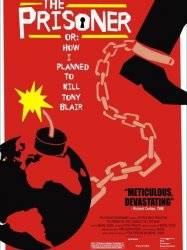 , 1h12
, 1h12Genres Documentary
Themes Documentary films about war, Documentary films about historical events, Documentary films about politics, Political films

Last Days in Vietnam (2014)
, 1h38Directed by Rory Kennedy
Origin USA
Genres War, Documentary
Themes Politique, Documentary films about war, Documentary films about historical events, Political films
During the chaotic final weeks of the Vietnam War, the North Vietnamese Army closes in on Saigon as the panicked South Vietnamese people desperately attempt to escape. On the ground, American soldiers and diplomats confront the same moral quandary: whether to obey White House orders to evacuate U.S. citizens only—or to risk punishment and save the lives of as many South Vietnamese citizens as they can. The events recounted in the film mainly center on the US evacuation of Saigon codenamed Operation Frequent Wind.
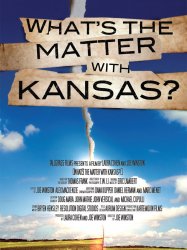 , 1h30
, 1h30Origin USA
Genres Comedy, Documentary, Romance
Themes Pregnancy films, Films about sexuality, Documentary films about historical events, Documentaire sur une personnalité, Documentary films about politics, Documentary films about health care, Political films
The documentary highlights the lives of people in Middle America, Central United States small town or suburb where most people are middle class, Protestant, and white, which twice helped elect George W. Bush. The movie shows how Kansas, once home to left-wing movements like the Populist Party, became very socially conservative in the late 20th century.
 Connection
Connection